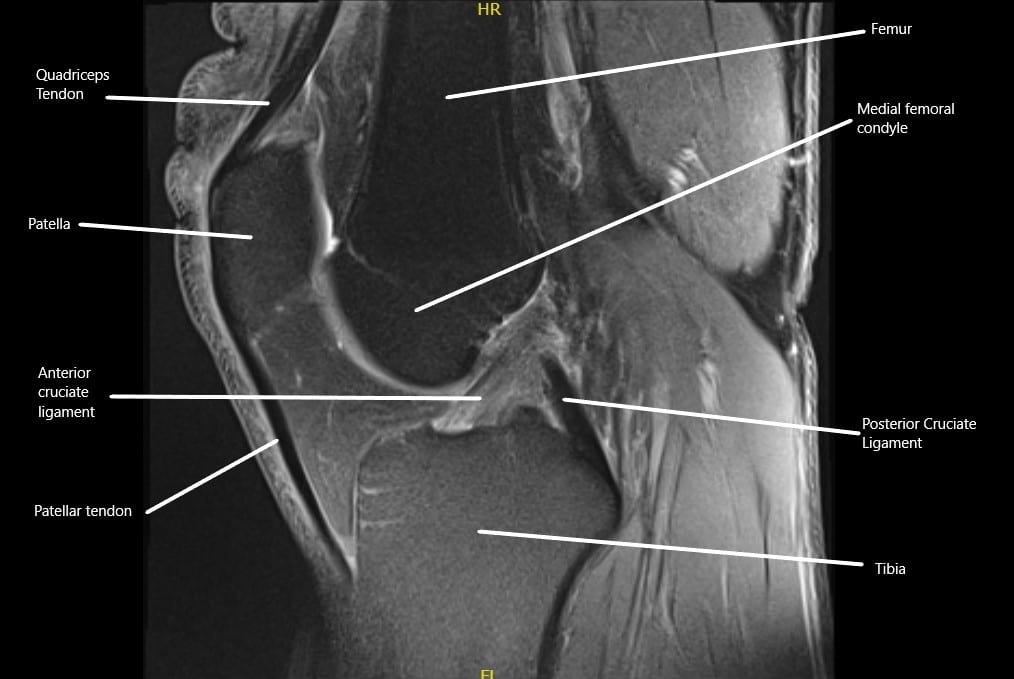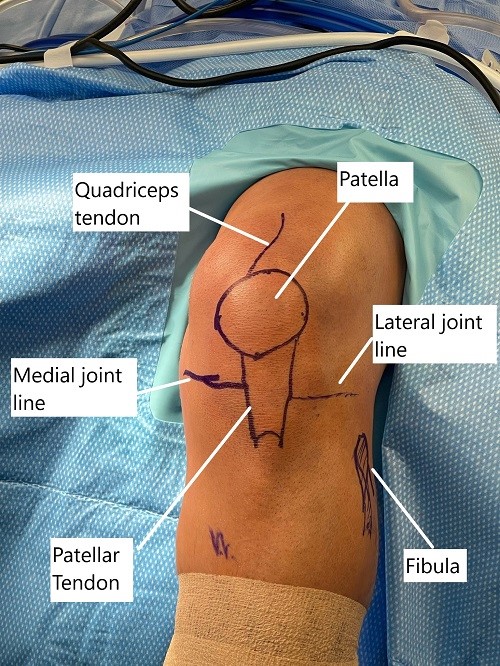Posterior Cruciate Ligament Injury
If knee pain intensifies, interferes with everyday activities, or is accompanied by swelling, redness, it is crucial to consult a healthcare provider. At Complete Orthopedics, our expert team focuses on effectively managing posterior cruciate ligament injury with customized approaches and surgical options. We are committed to understanding your symptoms, identifying the underlying problems, and recommending suitable treatments or surgical procedures.
Our facilities span across New York City and Long Island, with connections to six prominent hospitals, ensuring access to top-tier care for knee issues. Schedule an appointment with one of our orthopedic surgeons either online or over the phone. Learn about the causes and treatments for knee pain, and recognize when surgery is the best course of action.
Overview
The posterior cruciate ligament (PCL) is a strong fibrous tissue present inside the knee joint. The PCL along with the anterior cruciate ligament (ACL) plays an important role in the stabilization of the knee joint. The PCL may be injured while playing sports, accidental slipping, or a motor vehicle accident.
PCL injuries occur less often than the more common ACL injuries. While low-grade PCL injuries may be managed nonsurgically, high-grade injuries usually require surgical management.
Anatomy
The posterior cruciate ligament attaches the inner side of the lower thigh bone with the back of the upper shin bone. The cruciate ligaments are rope-like tough structures that stabilize the knee during day-to-day activities such as walking, turning, twisting, running, etc.

MRI showing the normal cruciate ligaments in the knee joint in the sagittal section.
The PCL ligament consists of two bundles, the anterolateral bundle, and the posteromedial bundle. While the anterolateral bundle is taut in a bent knee, the posteromedial bundle is taut in a straight knee.
The PCL primarily functions to prevent excessive movement of the shin bone against the thigh bone. The PCL also prevents excessive inner rotation of the leg in both flexion and extension. In a straight knee, PCL also functions to prevent excessive side-to-side movement of the knee.
The PCL is also responsible to prevent overshooting of the leg on straightening. As the PCL functions in conjunction with the ACL and the collateral ligaments, injury to the PCL often occurs in association with other knee ligament/meniscus injuries.
Causes
The PCL injury may occur in conjunction with other knee ligament injuries or may occur as an isolated injury. The injury mostly occurs as an acute injury following trauma but may also occur as a chronic injury secondary to repeated trauma.
The most common mechanism of PCL injury is falling with bent knees. As the shin bone is pushed against the thigh bone, the PCL ruptures/tears. The injury may also occur as a result of dashboard injury during a motor vehicle accident when the bent knee hits the dashboard which pushes the shin bone back against the thigh bone.
Other mechanisms of injury include traumatic knee dislocation, knee rotational injuries, etc. Athletes playing sports such as football, rugby, soccer, basketball, etc are especially vulnerable to PCL injuries.
Symptoms
The symptoms of PCL injuries as a result of acute injury present as acute pain, swelling, and difficulty walking. Patients may complain of laxity of the knee joint with a sensation of the knee giving away. Patients with isolated PCL injury may at times present with minimal symptoms. Similarly, patients with chronic PCL tears may present with only mild knee pain and instability.
Diagnosis
The physician elicits a detailed history surrounding the injury. The mechanism of injury may point towards the probable structure damaged in the knee. The physical examination involves special tests and maneuvers to test the integrity of various ligaments in the knee.
Commonly, the physician performs a posterior drawer test. The posterior drawer test involves the patient lying on the bed with their back towards the bed. The patient’s knee is bent at 90 degrees and the physician tests by trying to push the leg back against the thigh after first trying to pull the knee forward. The test is positive if there is excessive laxity on pushing the leg back.
The physician grades the PCL injury by the degree of laxity of the knee on performing the posterior drawer test. Similarly, the physician tests for the integrity of the other ligaments and meniscus in the knee.
An X-ray is usually requested to look for any bony injuries. Severe PCL injuries may result in an avulsion of a bony fragment along with the ligament which may be visible on an X-ray. The ligaments and other soft tissues are most clearly recognized on an MRI.

Intraoperative skin markings of the knee joint before arthroscopic reconstruction.
Treatment
Acute injuries with a bony avulsion may necessitate immediate surgery to fix and reconstruct the PCL ligament. Such injuries are usually associated with injuries to other structures of the knee. Grade 1 and 2 injuries are generally managed with nonsurgical techniques.
The physician may prescribe pain medication to help control pain. Icing is advised to help control the swelling. Icing and compression bandage helps to reduce swelling after acute injury. A knee brace is usually advised to help provide stability to the knee and help in healing.
Surgical reconstruction is done in case the conservative management fails to provide relief and in grade 3 and 4 injuries. The surgical reconstruction involves either the use of allograft or autograft. The allograft is harvested from a cadaver while an autograft is harvested from the patient’s own body.
The Achilles tendon, hamstrings tendon, or quadriceps tendon may be used as an autograft for PCL reconstruction. The reconstruction is usually done with the use of an arthroscope. In arthroscopic surgery, the surgeon uses keyhole incisions to insert miniature instruments along with a camera that projects the view on an outside display.
A rehabilitation program is started after the surgery to help the patient regain the strength and flexibility of the muscles surrounding the knee joint. The patients are able to get back to their day-to-day activities and sports after the rehabilitation period.
Recovery and Prognosis
Recovery from a PCL injury can vary. Non-surgical treatment may take several weeks, during which physical therapy plays a crucial role in helping regain knee strength and mobility. Post-surgery recovery can take several months, with a gradual increase in knee-loading activities guided by a rehabilitation specialist.
Do you have more questions?
What are the long-term effects of a PCL injury if left untreated?
Long-term effects can include chronic knee instability, pain, decreased function, and a higher risk of developing osteoarthritis.
How can PCL injuries be prevented, especially in athletes?
Prevention strategies include strengthening knee muscles, improving flexibility, using proper sports techniques, wearing appropriate footwear, and using knee braces during high-risk activities.
Are there any new treatments on the horizon for PCL injuries?
Research is ongoing into more advanced surgical techniques and materials for ligament reconstruction, as well as the use of biologics like platelet-rich plasma (PRP) and stem cells to enhance healing.
How does age affect the treatment and recovery of a PCL injury?
Younger individuals generally recover faster and more completely due to better tissue healing capacity. Treatment plans may vary based on age, with more conservative treatments considered for older adults.
Is a brace necessary for PCL injury recovery?
A brace can be helpful in stabilizing the knee during the initial recovery phase, especially for severe injuries. It supports the knee as it heals and can help prevent further injury during physical therapy.
How soon can one return to sports after a PCL injury?
Returning to sports depends on the severity of the injury and the individual’s progress in rehabilitation. It typically ranges from several months to a year, ensuring the knee has regained sufficient strength and stability
What is the success rate of PCL surgery?
The success rate for PCL surgery is generally high, with many patients returning to their pre-injury level of activity. Success depends on the surgical technique, the severity of the injury, and adherence to post-surgery rehabilitation.
Are there any alternative therapies for PCL injuries?
Alternative therapies might include acupuncture, massage, and specific exercises that focus on strengthening the muscles around the knee to compensate for the injured ligament.
Can a PCL injury recur after treatment?
Recurrence is uncommon if the injury is properly managed with appropriate rehabilitation and if activities that might cause reinjury are avoided or approached with caution.
What lifestyle changes might be recommended post-PCL injury?
Lifestyle changes may include maintaining a healthy weight to reduce stress on the knee, avoiding activities that involve heavy impact or sudden changes in direction, and incorporating low-impact exercises like swimming or cycling into one’s routine.
Where is the posterior cruciate ligament located?
Posterior cruciate ligament is located inside the knee and it attaches the lower end of femur to the upper end of tibia. It courses from the top and in the front to lower down on the back side of the upper end of tibia. It is present behind the anterior cruciate ligament.
What the symptoms of posterior cruciate ligament injury?
Posterior cruciate ligament injury usually happens due to fall or accident. These patients usually present with pain and swelling of the knee and may have instability. They may also complain of hearing a pop at the time of injury.
Can a torn PCL heal on its own?
The patients who have partial tearing of the PCL may heal by themselves. These patients are usually treated with brace and physical therapy and are re-evaluated to look for optimal healing of the PCL. If the tearing of the PCL is high grade or complete, then these patients may need reconstruction or repair of the PCL.
What is the surgery for PCL injury?
The patients who have high grade tearing or complete tear of the PCL may need repair or reconstruction of the PCL. In cases of repair, the PCL is fixed back to the bone with use of sutures and anchors. In case the patient needs reconstruction, then the PCL is reconstructed using tendons either from the patient’s body or from cadaveric origin to reconstruct the PCL using sutures and anchors or buttons.
How long does it take to recover from a torn PCL?
The patients who have partial tearing of the PCL may take two to four months of physical therapy and rehabilitation to recover completely from the PCL injury. The patients who have undergone surgery for the torn PCL may take 6 to 12 months to completely recover and get back to the preinjury status of activity or sportsmanship.
What is the function of posterior cruciate ligament?
The posterior cruciate ligament provides stability to the knee joint. It works in concordance with other ligaments of the knee, including the anterior cruciate ligament, the medial collateral ligament, lateral collateral ligament and the capsule to keep the knee stable during daily activities as well as sports.
Do all PCL tears require surgery?
Low grade PCL tears can be treated conservatively with the use of brace and physical therapy. Patients with high grade PCL tear or complete tearing of the PCL may require surgery in the form of repair or reconstruction of the ligament.

Dr. Suhirad Khokhar
My name is Dr. Suhirad Khokhar, and am an orthopaedic surgeon. I completed my MBBS (Bachelor of Medicine & Bachelor of Surgery) at Govt. Medical College, Patiala, India.
I specialize in musculoskeletal disorders and their management, and have personally approved of and written this content.
My profile page has all of my educational information, work experience, and all the pages on this site that I've contributed to.
